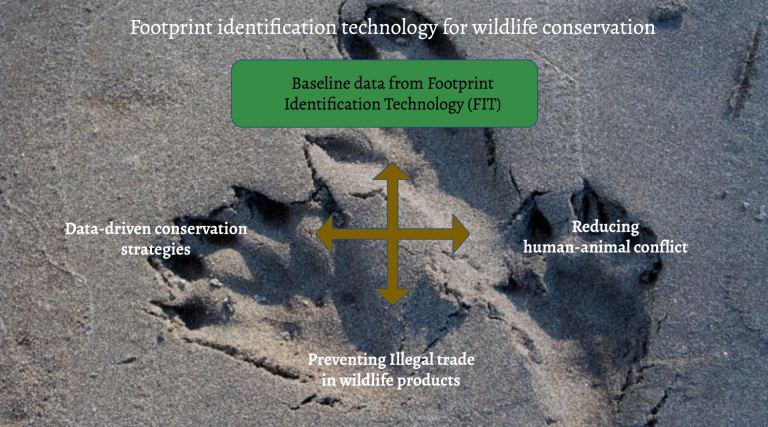Research & Development
WildTrack is pushing the frontiers of artificial intelligence and morphometrics for wildlife protection
We Are
We are a nonprofit that believes in the power of non-invasive and cutting-edge technologies to make conservation more friendly towards all species, including our own.

Technology to protect endangered species
We are constantly striving to develop and implement better tools to protect vulnerable species. For the most reliable monitoring, we often use a range of different non-invasive tools with slightly different capabilities Within our WildTrack Specialist Group we have expertise in a wide range of non-invasive and community-friendly tools, including footprint identification technology (FIT) using natural substrate or track plates, acoustics, camera-traps, eDNA and Traditional Ecological Knowledge (TEK).

Community Science!
We are currently developing a mobile app, WildTrackAI, to allow users to collect footprint images in the field and relay straight to our cloud platform for AI inference. That inference will be relayed in real-time back to the user on the ground! At the simplest level this could enable one to get a rapid species ID on a footprint. At the most sophisticated level one could identify an individual animal from a series of footprints along a trail, its age and sex, know who it was with, and if it was under threat from poachers, or human-wildlife conflict of another kind. This technology has the power to transform the way we collect, manage and interpret data for conservation!

Innovation!
We are also continuing to develop the world’s first AI analytical pipeline for automated ID of footprints and trails, new statistical techniques on our morphometrics platform, citizen-science portals and interfaces for a wide range of users. We are working hard to build user diversity into our community platform, including indigenous communities. Lastly, we’re building on-board AI capabilities into our drones to enable live aerial tracking of megaherbivores like the rhino whose trails can be seen from the air.